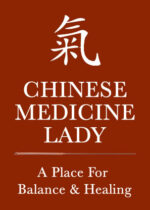Moxibustion Therapy
If you’ve spent any time researching Chinese medicine, you might have come across a therapy called moxibustion. In general, moxibustion doesn’t get as much press coverage as acupuncture or some Chinese herbal treatments, but this soothing technique has a wealth of health benefit.
Medical experiments have shown that Moxibustion exerts much wider and stronger effect on overall biochemical changes in the body than acupuncture:
- It increases the production of white blood cells.
- Moxa increases the production of red blood cells and hemoglobin.
- Moxa improves the overall blood and lymph circulations and the capacity to produce antibodies.
It may be worth your while to come try moxibustion, particularly if you suffer from stubborn health problems. Huang Di Nei Jing Ling Shu, a Chinese medical text from around 100 BCE, states that “A disease that may not be treated by acupuncture may be treated by moxibustion.” Today, moxibustion is often used for those who have found no success with (or are too sensitive to) either drug treatments or acupuncture.
What Is Moxibustion?
Moxibustion as a healing practice is as old as acupuncture itself; in fact, the Chinese word for acupuncture, zhenjiu, refers directly to this technique. Moxibustion is believed to have originated in China over 2,500 years ago, though it is likely that more rudimentary forms of moxibustion may actually predate acupuncture.
Like all traditional Chinese treatments, the goal of moxibustion is to bring the body into balance and ensure a consistent flow of qi. In this case, balance is achieved by the burning of moxa (ai ye in Chinese herbal medicine), or dried mugwort (artemesia vulgaris in Latin), close to or directly on the skin.
This powerful medicinal herb has a long history in both China and the West, and is perhaps best known in America for its close association with the “witches” of Medieval Europe. This is because of its frequent use in folk remedies, particularly to ease stomach pain, menstrual irregularities, anxiety, and itchy skin.
Moxa is understood within a modern Western medical framework to be a natural diuretic, as well as a moderate stimulant. It is also an emmenagogue, which means that it can trigger an increase of blood flow to the pelvic area – especially the uterus. This is why it is often used to treat uterine cramps and scanty (light or absent) menstruation. It may also be indicated for breech babies.
Who Should Consider Moxibustion?
Because fire (yang) is its central element, moxibustion is most often used to dispel cold stagnation (yin) and the conditions that arise as a result. Common problems from a Western medicine lens that may be loosely associated with cold stagnation include:
- Hypothyroidism
- Low blood sugar (hypoglycemia)
- Sluggish digestion
- Oversensitivity to cold
- Fluid retention
- Lowered immunity
- Joint pain and arthritis
- Depression and low mood
- Menstrual cramps
- Diarrhea/colitis
- Hemorrhoids
- Asthma
- Epilepsy
- Low immunity
- Autoimmune issues
- Poor circulation, cold hands & feet
- Ending a cycle of repeated colds & flu
- Ear infections
- Fatigue/Lethargy
- Insomnia
Gradually, Western medical research has begun to confirm that moxibustion effectively treats these ailments.
In one placebo-controlled clinical trial, moxibustion was shown to be highly beneficial for those with osteoarthritis. At the end of the study, the researchers wrote this:
“Moxibustion treatment is simple, easy to perform, and cost-effective. This modality is also more easily replicable than acupuncture, which is subject to variation caused by the different needling techniques of individual practitioners.
Our findings suggest that traditional moxibustion is a safe, effective, and easy-to-use therapy that can be a useful adjunct to conventional medicine for alleviating pain and improving function in patients with osteoarthritis of the knee.”
In another study, scientists used indirect moxibustion over two acupoints in 42 people with Hashimoto’s thyroiditis (autoimmune hypothyroidism). They found that the group that underwent moxa treatments in addition to taking prescription drugs had better thyroid function than the group that only took the drugs.
One of moxibustion’s most intriguing applications for women is its potential to turn breech babies (those that are upside down at term). About 90% of breech babies must be born via cesarean section, but most women would prefer to avoid this.
Recent studies have shown that moxibustion, when combined with postural techniques and/or acupuncture, can turn babies over so that they are in a less dangerous position at birth. This may be because of moxibustion’s ability to stimulate uterine contractions that can gently turn breech babies around.
CONSULTATION
Call to make an appointment for a Consultation and let us help you set up a program for you to be proactive in maintaining your health the CHINESE MEDICINE WAY! (818) 280-9133
“I am a true believer that some people come into your life at the right time. Lydia, Stephanie & Bruce are heaven sent. Very knowledgeable, caring, and skilled in the sacred healing of Chinese Herbs and medicine. I could not have prayed for a better practitioner here in Los Angeles (and even better The Valley). . .”
“The way she took care of me is one of a kind, Lydia is a gifted healer. I left her clinic feeling stronger and pain-free. The following morning, I honestly don’t have the pelvic pain and discomfort anymore. I was able to move without cringing or grimacing. I cannot thank Linda and Bruce for their remarkable service! . . .”
